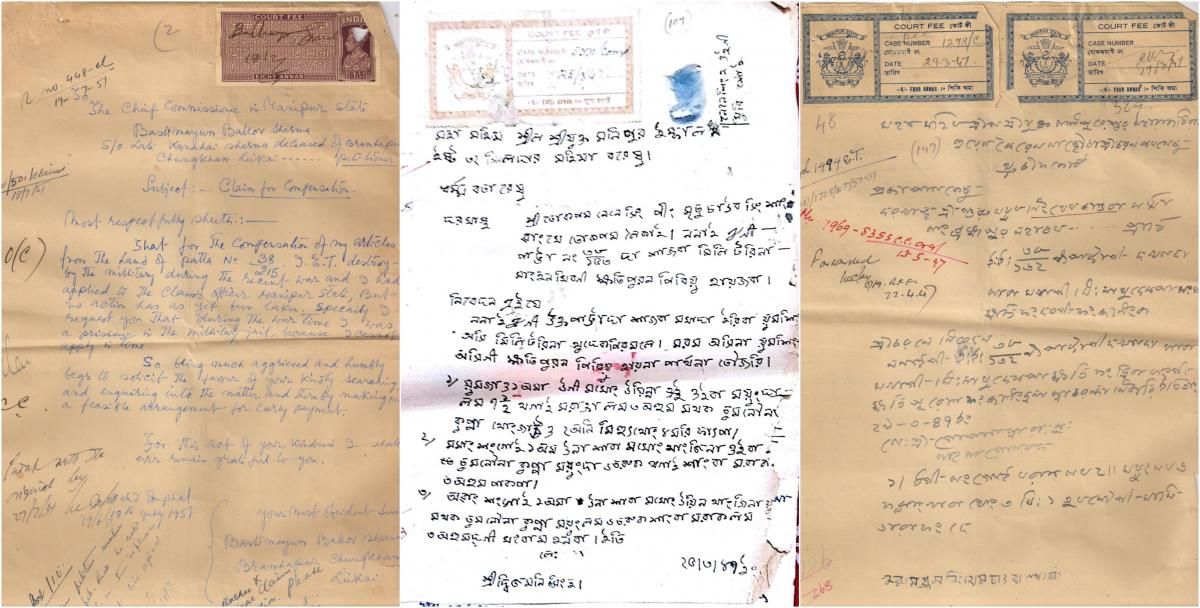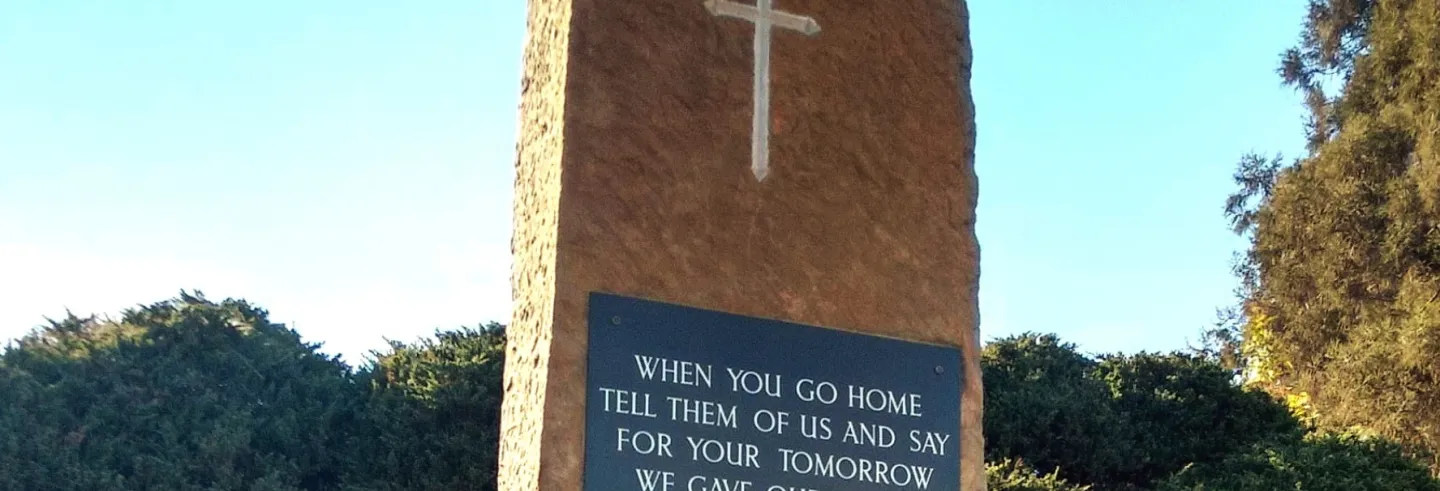The North East frontier region of British India and the dense jungles of Burma hosted some of the fiercest battles between the Japanese army and the Allied forces during the Second World War. In a survey conducted by the National Army Museum, London, the decisive twin battles of Imphal and Kohima, fought between March and July 1944, were voted some years ago as "Britain’s greatest battle" of the modern era, edging out the defeat of Napoleon at Waterloo and the D-Day landings during the Second World War. The twin battles are today narrated in multiple ways: each representing the different perspectives of the British Empire, of the Japanese Empire and the independent Indian state. None of these explicitly represent the local memories and histories of the war, which are discussed only as the setting of the narratives (Naorem 2019).
Memorialising the war
The end of the war, known in Meetei as the Japan Laan, was followed by celebrations and commemorations by the Allies; and trauma and introspection amongst the Japanese. Monuments and museums were commissioned by the British empire to commemorate the victory. The Commonwealth War Graves Commission took over the graves of the Allied soldiers in the region and maintained them as memorial sites. Military histories, as well as memoirs, biographies, and autobiographies of Allied war veterans, narrated the personal and regimental contributions, experiences, and sacrifices that resulted in in the defeat of the invading Japanese army and the defence of the British empire in Asia.
Japanese historians and the public interpret the twin battles as a devastating blunder which led to the unnecessary death of thousands of Japanese soldiers.
For the Japanese state and public, the disastrous defeat in Imphal and Kohima, along with the later experience of the atomic bombing in Hiroshima and Nagasaki, shaped their remembrance and commemoration of the war. Between 50,000 and 80,000 Japanese soldiers lost their lives during and after their failed campaign to capture Imphal. A large number of Japanese casualties came during their torturous retreat from Imphal, with many dying of exhaustion, starvation and malaria on the "Road of Bones" back to Burma. Japanese historians and the public interpret the twin battles as a devastating blunder that led to the unnecessary death of thousands of Japanese soldiers.

Post the war, the Japanese thus advocated peace and reconciliation. The Burma Campaign Society was set up in 1983 to facilitate reconciliation between the Allied and Japanese war veterans and their families. The Japanese government has sent out bone collecting missions to search and bring back remains of Japanese soldiers, to be cremated at peace memorials in the presence of their family members (Trefalt 2017). Japanese organisations have also set up memorials and museums, like the peace memorial at Maibam Lotpa Ching in Manipur in 1994 to commemorate 50 years of the battle, and the Imphal Peace Museum in 2019.
Commemorations and histories of the war by the Indian state placed the North East, otherwise outside the landscape of the national movement, within the scope of nationalist histories.
Once the princely state of Manipur and the Naga Hills were integrated into the Indian Union, many episodes of local histories were appropriated by a national history. Among them was the history of the Indian National Army (INA) and its recruitment of locals. The Indian government built a memorial in 1967 to commemorate the INA, Subash Chandra Bose, and the heroic exploits of local recruits during the war. Such commemorations and histories of the war by the Indian state placed the North East, otherwise outside the landscape of the national movement, within the scope of nationalist histories (Naorem 2019).
War tourism
Remembering the war has also had Japanese, British, and American war veterans touring the North East. While such trips have been going on for a long time, it was not easy for the veterans to get the necessary permits. With the lifting in 2010 of the 60-year-old Protected Area Permit regime, which had restricted the entry of foreigners into the region, a thriving war tourism industry has emerged in Manipur and Nagaland.
These tours are enthralling to the Americans, British, Japanese, Australians, and Indians from other states; [but] little emphasis is given to local histories and memories of the war.
Several NGOs, war veterans and their organisations, local historians, guides, and local war enthusiastic individuals have played a vital role in developing this war tourism. The Second World War-Imphal Campaign Foundation was instituted in 2009 to conduct archaeological digs at battle sites, collect artifacts and oral narratives about the war, build a local museum, and spread awareness of the war among the people. Subsequently, tour operators also started operating guided tours for war veterans and their families to visit the graves and memorials in the region. New itineraries now take people to the original battle fields, the villages, the sites for camps, trenches, airstrips and jungles. While these tours are enthralling to the Americans, British, Japanese, Australians, and Indians from other states; little emphasis is given to local histories and memories of the war. They continue to privilege the existing narratives of the twin battles, and are designed from specific episodes from the imperial narratives of the war.
The voices from the archives
In contrast to these memorialisations, is it possible to write a local history of the twin battles? In the recent years, many sociologists and historians have conducted extensive ethnographies in the region to collect local memories of the war, which will eventually contribute to writing local histories. However, the colonial archives themselves contain rich documentations of local experiences of war and testimonies of the locals in form of petitions, testimonies before state agencies and committees and in reports compiled by colonial administrators. Even though such testimonies were mediated by colonial power, one can recover their voices from these documentations in the colonial archives.
People spoke of how the invasion was foretold in a prophecy about nongpok thong hangba, ‘the opening of the eastern gates’, bringing in an army from the east to liberate the region.
Before the actual battles, the war reached the region in the form of rumours. By January 1941, in Manipur, people spoke of how the invasion was foretold in a prophecy about nongpok thong hangba, ‘the opening of the eastern gates’, bringing in an army from the east to liberate the region from the colonial rulers. In a year’s time though, it was war refugees fleeing the Japanese invasion of Burma who would swarm into Imphal from the east. They included Indian workers from Rangoon, British families and dispersed soldiers of different ethnicities, all numbering around 200,000 people.
As Japanese bombings began, most of the inhabitants of Imphal themselves vacated their houses and took shelter in the peripheral areas. Forced displacement, loss of properties, severe inflation and scarcity of essential commodities, hunger, starvation and diseases were common war experiences among local people in the region. The Allied army’s massive purchases of essential commodities from the market led to shortages and steep increase in prices. The price of rice increased to Rs 60 per maund in 1943 from Rs 1 in 1940. Houses were occupied or destroyed by the Allied army. In Imphal itself, as many as 20,000 houses were converted into barracks, while another 9,103 houses were burnt to make space. Standing crops were destroyed to build airstrips. A large area outside Imphal and in the hills was also burnt by the Allied forces to deny the Japanese army any resources during their advance to Imphal.
While the rest of India was celebrating independence, people in Manipur and the Naga Hills for long remembered 15 August 1947 for the thousands of rejected compensation petitions.
The archives contain several thousands of petitions that were filed seeking monetary compensation for the destruction. The large number of petitions overwhelmed the colonial administration, which arbitrarily fixed 15 August 1947 as the deadline for submitting them. Some petitions demanded compensation for small loses such as a pig taken away by the Allied soldiers. Others were for large amounts. Chaoba Singh from Sagolband claimed loses of Rs 137,625. A contractor, he had provided firewood to the Allied army before he and his wife were captured by the Japanese army and imprisoned in Rangoon. When the Allies recaptured Rangoon in 1945, he was re-imprisoned by them. Singh wrote in his petition that the Allied administration refused to pay for his services before his capture, and his properties were either destroyed or confiscated by them. His claim was however rejected as he failed to submit his petition before the deadline. While the rest of India was celebrating independence, people in Manipur and the Naga Hills for long remembered 15 August 1947 for the thousands of rejected compensation petitions and the monetary losses.

Even for petitions that made it in time, the administration denied compensation for hill districts of Manipur and the Naga Hills, where most destructions took place. The government had categorised most of the hill districts in the region as "enemy territory", since they were temporarily occupied by the Japanese army, and it was only ready to take responsibility for damages done by the Allied army. The local administration was asked to wait for war reparations from Japan before any further action on these petitions from the erstwhile enemy territories. Despite these claims, the Indian government of Jawaharlal Nehru withdraw all further demands from the Japanese and settled the issue of reparation with the India-Japan peace treaty of 1952.
The entire population of Naorem Utrapat was evicted by the army in 1942. When the villagers returned in 1945, they could hardly recognize the landscape: houses and crops had been burnt and the entire village was in ruins.
Even in areas held by the Allies, demands for compensation was often denied, as in the case of the villagers of Naorem Utrapat, located very close to the headquarters of the 17th Division of the Allied army. The entire population of Naorem Utrapat was evicted by the army in 1942. When the villagers returned in 1945, they could hardly recognize the landscape: houses and crops had been burnt and the entire village was in ruins. The villagers applied for compensation individually in 1946 and as a group in 1949, but they were continuously denied, leading to litigation in the against the union and the state government in the 1950s and 60s. The issues of relief, rehabilitation and compensation were taken up by most of the political parties in the region, with several political rallies and meetings held demanding the release of war compensation. E.P. Moon, the chief commissioner of Manipur, though, dismissed these demands as a communist conspiracy.
War and peace and statemaking
These post-war issues such as relief, rehabilitation, reparation, and compensation provided a platform for entry of Indian state and its institutions in the region. This built upon the wartime and postwar colonial administration that had facilitated the process of a more direct colonial control in the region. Looking at the local history of the region from the perspective of the war, it is clear that war-related issues significantly dominated the discourse of local politics into the 1960s. Local histories have failed to capture this significance of the war for the various political development leading to the consolidation of the former North-eastern frontier for the new Indian union.








